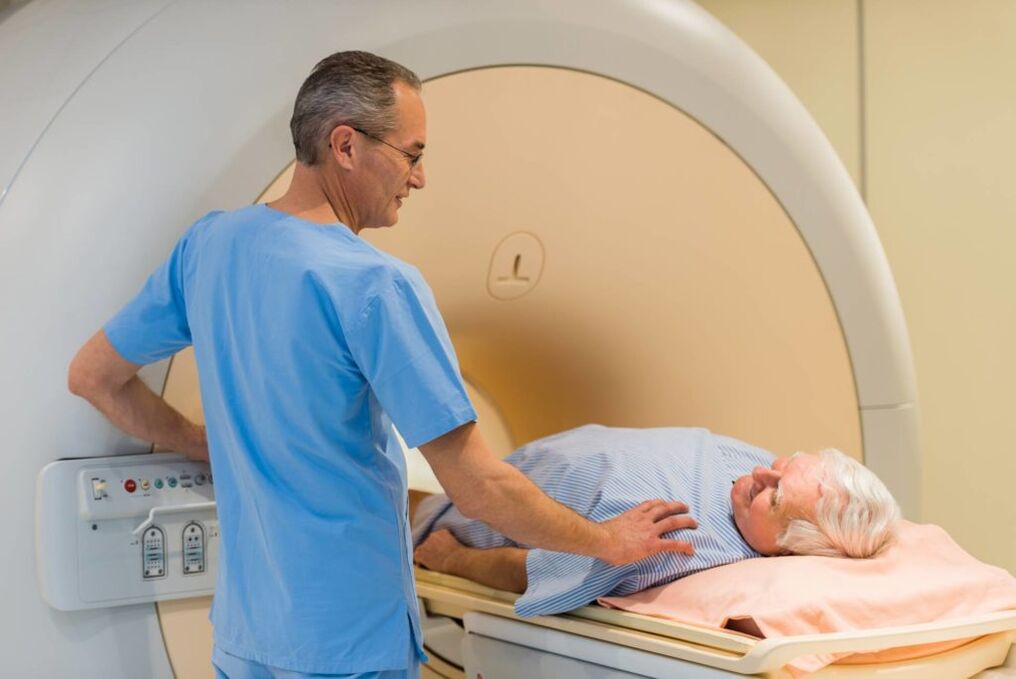Calculus prostatitis is a complication of chronic inflammatory processes in the prostate gland. With this disease, calculus is formed in the excretory tract of the prostate and acini. As a result of the development of pathological processes, the patient's desire to urinate becomes more frequent, pain occurs in the perineum and lower abdomen, and erections are impaired. You should not suffer from this disease, as it can eventually lead to some health problems.
Is prostatitis calculus

This disease is a type of chronic prostatitis. The disease is characterized by the formation of prostatolites or calculi, being one of the most frequent consequences of the protracted inflammatory process observed in the prostate gland.
Stones in the prostate are most often detected during routine examinations in about 9% of men of different ages.
There are three age peaks in the incidence of this form of prostatitis:
- 30-39 years. As a rule, the disease is not detected in patients under 30 years of age. However, the disease gradually becomes younger. In people in this age group, the development of calculus prostatitis is associated with a long course of chronic prostatitis caused by gonorrhea, chlamydia, ureaplasmosis or mycoplasmosis.
- 40-59 years. In men in this age group, the disease most often causes prostate adenoma.
- Over 60 years. In this case, calculus prostatitis most often develops against the background of extinction of sexual function.
Causes and risk factors
The formation of stones in the prostate gland can be caused by two types of reasons:
- True or primary, characterized by the direct development of the disease in the glandular or acini ducts.
- Secondary or false, in which there is migration of calculi from the upper urinary tract. Often, the site of its formation is the bladder, kidneys or urethra. The reason for the development of calculus prostatitis may be urolithiasis.
Depending on the nature of the onset of the disease, the reasons for its development are divided into two groups:
- Exogenous. In this case, we are talking about factors that are not related to the work of the body, but act on it from the outside. These include drug addiction, smoking or alcohol abuse.
- endogenous. Concrete occurs against the background of any disturbances in bodily functions. We are talking about organ injuries or complications after surgery. Bacterial damage to the prostate is also related to these factors.

Alcohol abuse can trigger the development of calculus prostatitis in men.
Calculus prostatitis usually develops against the background of stagnant changes, inflammation in the prostate. Such a process arises due to insufficient emptying of the prostate gland, therefore the following factors are the main causes of the disease:
- lack of a normal sex life;
- dominance of an inactive lifestyle;
- replacing sex with masturbation;
- bad habits, such as alcohol or smoking;
- the inflammatory process of the prostate gland caused by the penetration of microbes into organs.
Experts distinguish between two main pathological mechanisms that lead to the formation of stones in the organs and their ducts:
- Violation of secretory function, as a result of which a significant stagnation of prostate secretion is formed.
- Discharge of urine into the cavity of the prostate gland. This can occur against the background of improper functioning of the genitourinary system, the formation of fistulas and the influence of several other negative factors.
symptoms
The signs of calculus prostatitis are in many ways similar to the development of chronic inflammation of the prostate gland, but they are more pronounced. Most patients with prostatitis diagnosed in this form complain of difficulty and pain while urinating.
The difference from chronic prostatitis in this case is that the pain is present in the patient all the time, and not just at night. The reason for such a clinical picture is most often the process of disruption of the outflow of urine and secretion of the prostate. This is due to complete or partial obstruction of the channel with stones.
Some other symptoms of the disease should also be highlighted:
- The presence of pain in the pelvis and perineum. Moreover, they can show themselves not only during urination. The patient has an unpleasant sensation in the tailbone and lower abdomen, which does not depend on a particular time of day.
- Pathological impurities appear in semen. Often, bloody discharge is found in it, and only in extreme cases can there be pus.
- Painful urination with a background of frequent false desires. In most patients, very little urine is excreted. However, it may not be fully present.
- Erectile dysfunction. Due to the fact that the ducts of the prostate gland are blocked, the normal outflow of semen from the organs is disrupted. All this leads to the impossibility of resolving intercourse.
In the most severe cases of disease progression, the patient may completely lack an erection and significantly reduce libido.
Diagnostics

Magnetic resonance imaging gives good results to accurately identify the disease.
Before treating coral prostatitis, the patient must be carefully examined. Urologists are involved in the diagnosis of this disease. He is required to make an initial diagnosis based on patient complaints, as well as subsequent physical and instrumental examinations. It includes the following procedures:
- Digital rectal examination of the prostate gland. It is performed by palpation. With the presence of calculus prostatitis, the patient has a kind of crepitus and a corrugated calculi surface.
- Transrectal ultrasound of the prostate. Through this procedure, rocks are identified that have the appearance of hyperecooic formations with clearly visible acoustic pathways. The number of such formations, their size, localization and structure were studied.
- Urographic review. This procedure allows you to identify the presence of prostalysis.
- MRI and CT of the prostate. These techniques are very effective and are used to validate the results of previous studies.
As additional procedures are used: urethrography, pyelography and cystography.
In addition to instrumental techniques, the diagnosis of calculus prostatitis includes laboratory tests, which include the following procedures:
- Studies on prostate secretion.
- Analysis for bacteriological cultures of urine and material from the urethra.
- PCR studies, during which abrasions were taken, were examined for the presence of genital infections.
- Blood test. Often, biochemical analysis is given.
- Urine analysis.
- Semen analysis for biochemistry.
- Breeding of ejaculatory bacteria.
If we talk about conducting differential diagnostics, then its task is to distinguish calculus prostatitis from tuberculosis, prostate adenoma, prostate oncology, as well as various types of prostatitis.
Treatment
How to cure calculus prostatitis? Therapy for calculus prostatitis is prescribed by a doctor based on a thorough diagnosis. Depending on the stage of disease progression, several treatment options are possible. Let’s consider each of them in more detail.
Drug therapy
The course of treatment is prescribed by the doctor strictly on an individual basis.
Treatment of chronic calculus prostatitis with pills can last from one to three months. This type of therapy aims primarily to achieve stable remission and prevent complications of the disease.
Regardless of the cause of the disease, patients are given antibacterial drugs. Antibiotics were prescribed based on the results of analysis of urethral secretions and urine cultures.
The most commonly used drugs in the treatment of calcareous prostatitis are:
- Fluoroquinolones. This is the most effective group of antibiotics used in the treatment of calculus prostatitis. However, these funds can be used only after the presence of tuberculosis has been completely excluded.
- Tetracyclines. They are used less frequently, as they often trigger the occurrence of side effects.
- Penicillin. Classical antibiotics that have a wide range of effects on pathogenic microflora.
- Cephalosporins.
Physiotherapy
To enhance the effects of drug therapy and improve prostate function, the following physiotherapy techniques are used:
- Magnetotherapy. It is used to relieve edema and normalize the circulatory process.
- Laser therapy. Eliminates pain syndrome and helps reduce the inflammatory process.
- Prostate sequence. Allows you to restore the patency of the ducts, improve blood circulation in the prostate gland.
In some cases, the treatment of calcified prostatitis requires a radical approach. In this case, various surgical techniques are used, the most popular being prostatectomy.
Possible complications

Exercise is the best prevention of calculus prostatitis.
If the patient is not given timely treatment, the patient may develop chronic calculus prostatitis. This can be met with the following dangerous complications:
- the development of abscesses;
- prostate fibrosis;
- problems with potential;
- urinary incontinence;
- various forms of vesiculitis.
Therefore, it is very important to identify calcified prostatitis in a timely manner and start treating it. As prophylaxis of the disease, one should stop alcohol and smoking, play sports, treat infections in a timely manner and prevent hypothermia of the body.
























